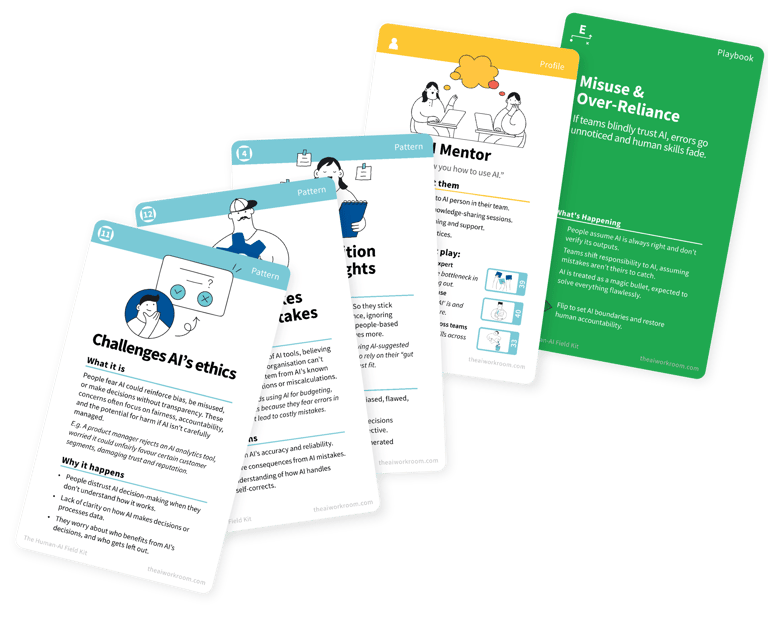The Co-Creator
BEHAVIOUR PROFILEBEHAVIOUR KIT
Lauren Kelly
They see AI as a spark, not the fire. It’s a tool for stretching ideas, breaking blocks, and building momentum. They’re the bridge between old workflows and new ways of creating. Their playful curiosity drives adoption. But lean too hard on AI, and they’ll feel like the work is no longer theirs.
How to spot them
Signature behaviours:
Uses AI to jam – Brainstorms, iterates, and riffs with AI tools.
Keeps what fits – Edits and curates AI outputs, never pastes and runs.
Experiments often – Tries new tools just to see what they can do.
Challenges their own ideas – Uses AI to test, break, or reshape thinking.
Prioritises originality – Protects their voice and creative fingerprint.
What this means for you:
They supercharge creative workflows and speed up ideation.
They bring energy and momentum to AI exploration.
But without clear boundaries, they may lose clarity in their voice or default to AI too early.
With support, they become a model for thoughtful, human-led creation.
The challenges they create
⚠️ Style dilution – Too much AI input can dull their creative edge.
⚠️ Idea overload – AI floods them with options, making it harder to focus.
⚠️ Overuse risk – May lean on AI even when human insight is needed most.
⚠️ Creative dependency – Without guardrails, AI becomes a crutch, not a co-pilot.
What to do
Frame AI as the sketch, not the final piece
Reinforce that they bring the flavour, AI just adds range.
Use prompts to stretch thinking, but edit with care.
Encourage working in layers, AI first, human polish second.
Set creative boundaries, not limits
Help them define when to explore with AI and when to trust their gut.
Build in constraints: formats, tone, voice, audience.
Make space for review. Ask, “Is this still yours?”
Showcase originality as the metric
Celebrate when AI pushes their voice, not replaces it.
Share examples where co-creation led to something distinctly new.
Let them lead creative demos, showing how AI fits their process, not defines it.
Methods that use the profiles
More profiles to explore
Get all 42 patterns and more in the HAP Behaviour Kit and HAP system to run
A digital card kit that spots human friction, flips the behaviour, and turns AI skeptics into everyday users.
Works remote, hybrid, or in‑room.
£765
(+ applicable taxes)


Human-AI Performance
By Lauren Kelly
Contact: lauren@alterkind.com
© 2025 Alterkind Ltd. All rights reserved.
Human-AI Performance™ is a proprietary methodology developed by Alterkind Ltd using our Behaviour Thinking® framework. All content, tools, systems, and resources presented on this site are the exclusive intellectual property of Alterkind Ltd.
You’re welcome to use, share, and adapt these materials for personal learning and non-commercial team use.
For any commercial use, redistribution, or integration into client work, services, or paid products, please contact lauren@alterkind.com to discuss licensing terms.
Icons by Creative Mahira, The Noun Project.
Thanks to Nicholas Edell, Valentina Tan and multiple VPs implementing AI for your feedback during development.
LICENSE
Based on work at alterkind.com
For commercial licensing contact: lauren@alterkind.com
